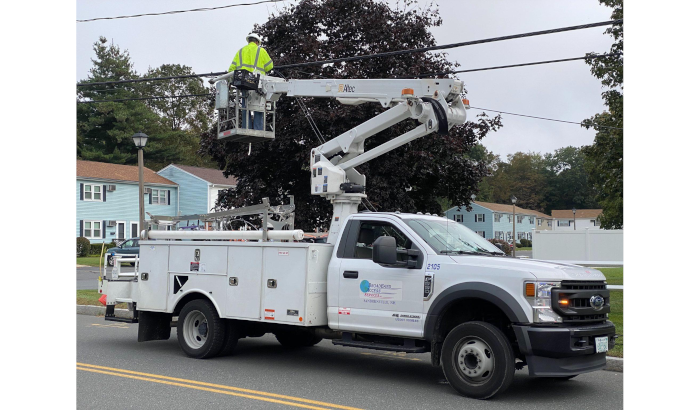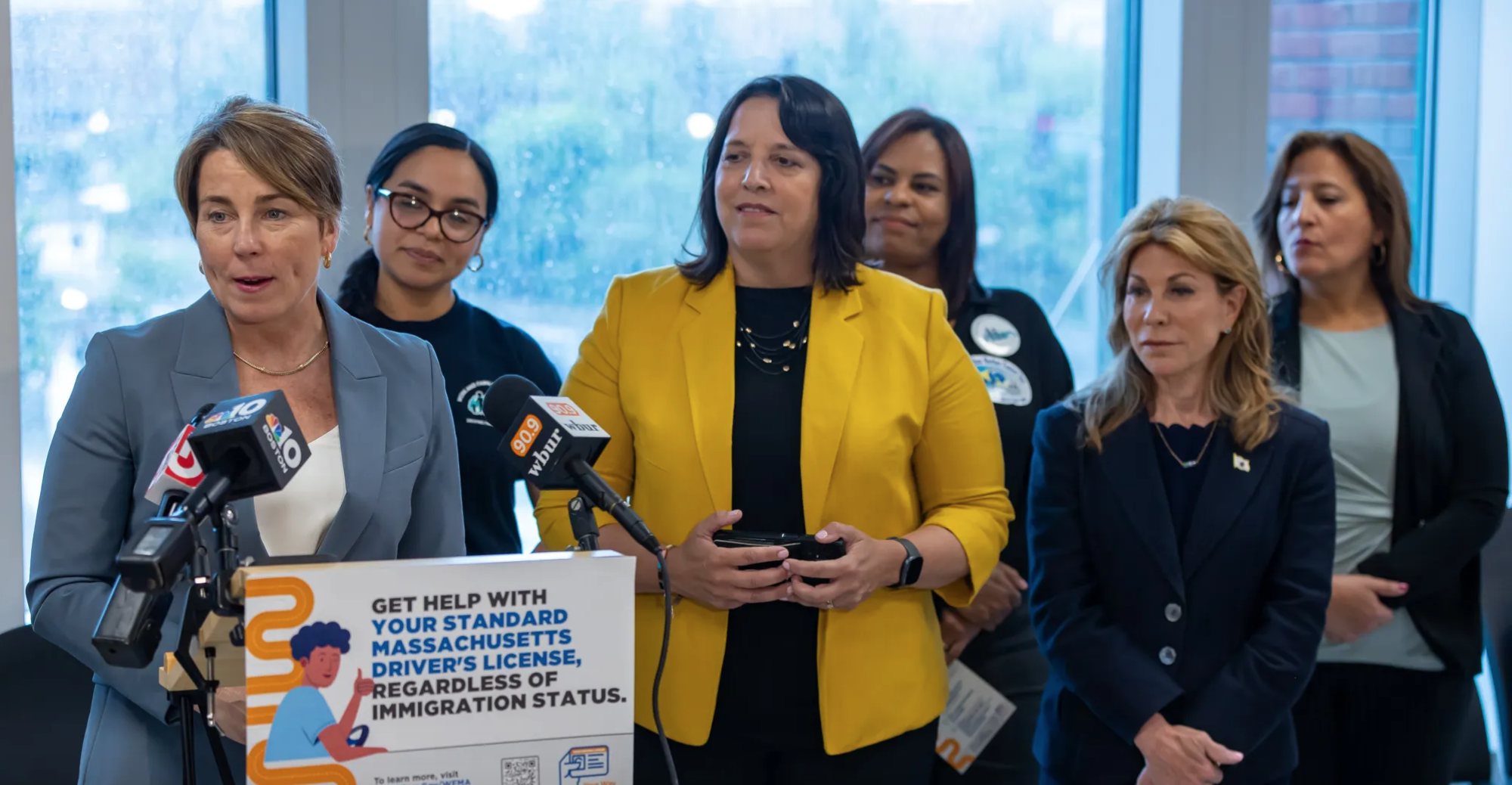
A conversation with photographer and social worker Eva Rachel Tine
“It’s a series based in hope and joy and what happens when you give people the opportunity to stabilize, heal, and thrive.”
Homelessness in Cambridge is a manageable problem, but it’s also one that requires local and state governments, advocacy groups, and many more competing interests to work together to provide the best possible care and solutions to one of our most vulnerable populations.
We also need to act fast, as homelessness persists, eviction rates rise, and our unhoused migrant neighbors, often arriving in family units, show up at our doorstep.
These and other intersecting issues are the focus of the new Unhoused Neighbors Project Photo Series, on display and viewable to the public at Cambridge City Hall through April 16. I asked Eva Rachel Tine, the director of housing and homelessness for the United Way of Massachusetts Bay & Merrimack Valley and the photographer behind the exhibit, to explain the situation at hand and tell us more about the project.
Chris Hues: Can you also tell me about getting the pictures for the Unhoused Neighbors Photo Series up in Cambridge City Hall and the reception as well?
Eva Rachel Tine: My understanding is that they’ve gotten some well-intentioned pushback. I’ve heard rumors that people were wondering, Would these unhoused neighbors want their faces to be in this public space? The answer to that is, yes, they signed releases. But there is still that fear.
The photos were originally in City Hall for an initial reception, the unveiling, and then they got moved to the library. Then my understanding was because of Black History Month, and I think also because of Women’s History Month, they couldn’t get it up again until April. I don’t know how much you know about getting stuff done in Cambridge and other communities, but there’s always some political reason why you can’t do something that you want to do.
When did this idea for the photo series first start to take hold?
There’s been different iterations. I would say the real beginning was back around 2016. I started a series about emotional abuse then, and I was thinking of different topics that I wanted to treat in a similar way—basically sharing empowering imagery chosen by the people impacted by an issue. I had it in my head that I wanted to address homelessness in that kind of photo series at some point.
Fast forward to 2020, I started grad school in January for social work and had to interview a macro social worker. I met with [Cambridge City Councilor] Marc McGovern at City Hall, and we started talking afterwards. I don’t remember if he or I mentioned it, but we both were like, We should do a photo series about homelessness!
Then the pandemic happened, so we stopped talking about it. This past summer, I ended up on Marc’s radar and got invited to be on an expert panel about safe consumption sites, which we’re now calling overdose prevention sites. Because I was on that panel and I was talking to Marc about issues related to that, we started talking again about the series and we’re like, Okay, you know, COVID is calming down, maybe we can finally pull this off. And so that was how it came to be, finally.

What is the goal of this project? What do you want people to take away from it and learn?
The biggest barrier in every single meeting that I’m in about ending homelessness is nimbyism. It’s always that people don’t understand this issue. They’ve gotten a lot of miscommunication, a lot of false information about this issue. And so, they don’t have the motivation to fix it and to invest in real evidence-based solutions because they don’t recognize that it matters. They don’t recognize that the people it impacts matter. They’ve been told that these people don’t matter. So having this series and having people be able to share their stories from their own perspective in their own voice is crucial.
Long term, the goal for this photo series is to hold it in other cities and towns throughout Massachusetts and to continue to have meet and greets, where the people in the photos are able to have one-on-one conversations with the people that come to see the show, and then come together as community, unhoused and housed neighbors working together to build solutions for how everyone can access the housing that they need.
Part of what was also important to me was having the photos not be depressing, but really be humanizing because why are you going to invest in something that you think is hopeless, right? You invest in something when you believe that there’s hope. It’s a series based in hope and joy and what happens when you give people the opportunity to stabilize, heal, and thrive.
I understand that there is also an Unhoused Neighbors Working Group. Can you tell me about that?
I’m very excited about that. We’re supposed to launch May 2 for the first iteration. It’s a 13-week advocacy training group rooted in healing, mindfulness, and community building. I’ve made 13 modules and the goal is actually for the participants to plan six separate stakeholder meet and greet sessions. So basically, they [the people experiencing homelessness] identify stakeholders that they want to talk to directly about issues that impact them. We work on what they want the event to look like. We work on their advocacy pitches so that they feel really solid about what they’re going to be saying to stakeholders. And then, we basically have pizza parties where we invite these stakeholders in. Then the participants get to have confident conversations in their own space and share their solutions for how to solve the problems that impact them.
There is a $400 stipend at the end of the 13 weeks, they get $30 gift cards every single week, an MBTA pass every single month, and food at every meeting.
That program sounds amazing. To segue into a more general topic, what are the biggest three priorities that people need to know about homelessness and how to fix this problem?
First, improving data in general is very crucial. Right now, we don’t know how many people are experiencing homelessness, we don’t have any way of tracking them through the system, and we don’t have a comprehensive way of seeing what’s been effective for them and what hasn’t been. Second, the affordability of housing and what type of housing exists. And the third component is that we need more trauma-informed services.
Can you expand on the trauma-informed services? What are those?
Basically trauma is anything that feels overwhelming and meaningfully harmful to you that you can’t stop and that nobody’s coming to help you stop. Although the services that we currently provide to people are quite traumatizing, we could choose to make them the opposite. We could choose to make them healing. We could choose to make substance use services easily accessible and compassionate.
With the housing program that I ran for people at Mass and Cass, it was a housing first and harm reduction program. We were never forcing anybody to do anything related to their substance use. When I first met with people, the first thing out of my mouth was, Hey, whatever you’re doing doesn’t matter to me. The only thing I care about is if you are safe and how I can help you access the things you need to be safe.
Just by introducing myself that way, people felt like they could trust me. They felt like they didn’t have to hide. And the thing that they would say time and time again was, I actually really wanna get sober. I’m so tired of using, I just need to stabilize first so that I can. All people need is genuine care and compassion. And it is the thing that we deny first to people when they have a substance use disorder because we’ve been told that they’re bad people. We’re denying them the only thing that they need to heal because of the misinformation that we’ve been given.
One of the things that I feel really strongly about is the peer support model. And I keep trying to convince every single organization I talk to to embrace this model. Basically, the people that you serve or the people in your community who have experienced homelessness, who have experienced substance use dependence, who have experienced domestic violence, whatever it is, put them through a peer training, a paid peer training with a certificate at the end.
So now they have access to higher paid jobs and they can be a one-on-one support for people who have been through the same stuff so that people can just feel that compassion can have that person who’s helping them feel like they’re not alone solving their problems. That hand holding, that compassionate care, is what we all need in order to heal from trauma, but it’s a thing we don’t offer to almost anyone experiencing homelessness. And the case managers that we do provide usually are so burnt out, or haven’t had the lived experiences that create genuine empathy and understanding. So they often shame, punish, or judge the people they serve, which only adds to the trauma, barriers, mistrust, and suffering experienced by our unhoused neighbors.
That is something that most people in these, in this ecosystem of housing don’t understand, even at its core level. Homelessness, substance dependence, mental health issues, and behavioral difficulties are caused and worsened by an absence of truly affordable housing and supportive community. None of us, housed or unhoused, can stabilize, heal, or thrive without compassionate care and a safe, stable, uplifting home. Homelessness is solvable; we just need to finally guarantee our unhoused neighbors the support and resources that we all need to thrive.





